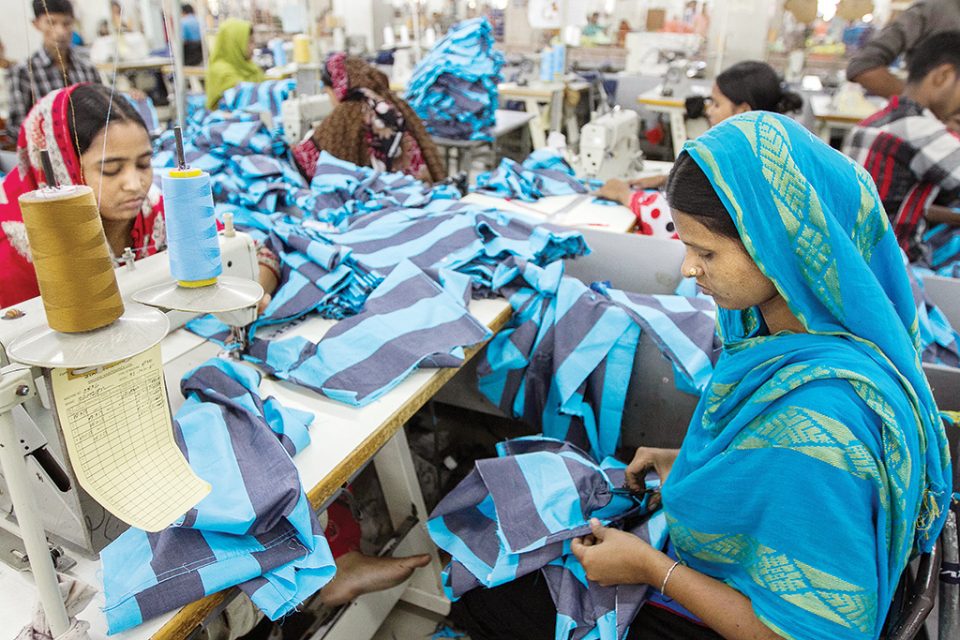India’s exports to Bangladesh took a hit in August, falling by 28% to $5.68 billion, down from $5.94 billion in the same month last year. This decline comes as Bangladesh grapples with a worsening foreign exchange crisis, further exacerbated by ongoing protests and political unrest. Official data from India’s Ministry of Commerce and Industry highlighted this downturn.
Despite the setback, rating agency Crisil noted that, for now, the impact on India’s overall trade with Bangladesh has been relatively limited. However, it warned that if the disruptions continue, they could affect
the financial health and operational cycles of export-oriented businesses that rely on Bangladesh either as a key market or a production hub.
A significant factor contributing to the slowdown is the sharp decline in cotton exports to Bangladesh, which fell nearly 10% to $1 billion in August 2024, compared to $1.11 billion in August 2023. Cotton is one of India’s primary exports to Bangladesh, and the drop reflects a broader trend of reduced orders for textiles and garments from Bangladesh, driven by the ongoing protests and political instability.
This reduction in demand from Bangladesh has had a ripple effect on India’s textile sector, which supplies raw materials to Bangladeshi garment manufacturers. Indian suppliers are facing challenges in meeting demand, which could lead to further delays in production and shipments.
Crisil noted that certain sectors could see a slight negative impact due to the slowdown in Bangladesh’s economy, but the overall risk to India’s exporters remains manageable. For sectors such as cotton yarn, power, footwear, soft luggage, and fast-moving consumer goods (FMCG), the effects are expected to be small and relatively easy to absorb.
On the other hand, industries like shipbreaking, jute, and ready-made garments (RMG)are seeing an uptick in orders, particularly from major export markets like the US and Europe.
These sectors are poised to benefit from the shift in demand, according to Crisil. For companies involved in cotton yarn production, Bangladesh is a key market, accounting for about 8-10% of sales. Any prolonged disruption could potentially affect their revenue profiles. However, the impact on profit margins is likely to be limited, as cotton yarn spreads remain modest.
The political unrest in Bangladesh has also led to disruptions in the operations of Indian engineering and construction firms working in the country. Many workers have been recalled to India, causing delays in the execution of power and infrastructure projects. These disruptions are expected to persist through the fiscal year, with only a gradual return to normal operations.
The slowdown in Bangladesh’s textile and garment sector could also result in lower-than-expected revenue for companies supplying raw materials and manufacturing equipment. These companies may face delays in order fulfillment and payment collections, further affecting cash flow.
Another challenge faced by Indian exporters is the depreciation of the Bangladeshi Taka against the
Indian Rupee and other currencies.
This has further complicated the forex situation, making it more expensive for Bangladeshi buyers to import goods from India. Additionally, many transactions between the two countries are conducted through letters of credit (LCs), and the risk of payment delays or defaults could rise as the
forex crisis intensifies.
Delays in payments could also result in higher debtor risks, with Indian companies increasingly reliant on Bangladeshi banks for settlements. This further adds uncertainty to the business environment.
Despite these short-term challenges, Crisil does not foresee a significant impact on the credit quality of Indian companies overall. India’s trade with Bangladesh accounts for just 2.5% of India’s total exports and a mere 0.3% of its total imports. As such, the ripple effects of the current disruptions are unlikely to affect India’s broader economic outlook.
However, the situation remains fluid, and companies with significant exposure to Bangladesh will need to monitor the situation closely. The ability to diversify their markets and maintain robust supply chains will be key to mitigating the risks associated with the ongoing political and economic instability in Bangladesh.
In conclusion, while India’s exports to Bangladesh are facing short-term challenges, the long term impact on Indian industries seems manageable, provided the situation does not escalate further

